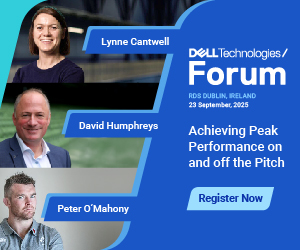
HPC community must prepare for early fault-tolerant quantum computing
A joint report from Alice & Bob and Hyperion Research has detailed how early fault-tolerant quantum computing (eFTQC) will accelerate solutions in critical HPC applications beyond classical supercomputing capabilities within the next five years.
The study, Seizing Quantum’s Edge: Why and How HPC Should Prepare for eFTQC, provides guidance on how HPC professionals can invest today in the design and integration of useful hybrid workflows for near-term applications.
“Quantum technologies are a pivotal opportunity for the HPC community, offering the potential to significantly accelerate a wide range of critical science and engineering applications in the near-term,” said Bob Sorensen, senior vice president and chief analyst for quantum computing at Hyperion Research. “However, these machines won’t be plug-and-play, so HPC centres should begin preparing for integration now, ensuring they can both influence system design and gain early operational expertise.”
The report described how physical limits on transistor size and chip energy capacity have considerably slowed performance gains in classical HPC systems in the past 10 years. Meanwhile, the timeline to useful quantum applications has shortened, as evidenced by the 1000x reduction in the estimated resources required to run Shor’s algorithm.
The report projected that within the next five years quantum computers with 100 to 1,000 logical qubits and a logical error rate between 10-6 and 10-10 will significantly accelerate scientific computing applications starting with materials science and rapidly reaching quantum chemistry and fusion energy simulations.
“HPC users will see benefits in accuracy, time-to-solution and computational cost as hybrid HPC-quantum workflows shift some computationally complex subproblems to quantum processors,” said Théau Peronnin, CEO of Alice & Bob. “HPC centres that want to lead have to co-design these hybrid workflows with users and vendors, shape efficient software and hardware infrastructure and deploy eFTQC prototypes to secure first-mover advantage.”
The report described how to integrate eFTQC, GPUs, and CPUs into an existing supercomputing centre and included recommendations for building application codes for HPC users, developing the hybrid software stack, and training the HPC user base for eFTQC adoption.
To establish a quantum-ready workforce and infrastructure and maximise the benefits of quantum processing, the report recommended that HPC centres explore heterogeneous workloads by collaborating with quantum vendors.
“The HPC community has always been quick to adopt disruptive architectures – from vector processors to GPUs – and quantum computing is no exception,” said Juliette Peyronnet, US general manager at Alice & Bob, who co-authored the report. “This work is a call to action for HPC centres to begin preparing for eFTQC integration now, so they are ready to harness the next major HPC accelerator.”
TechCentral Reporters






Subscribers 0
Fans 0
Followers 0
Followers